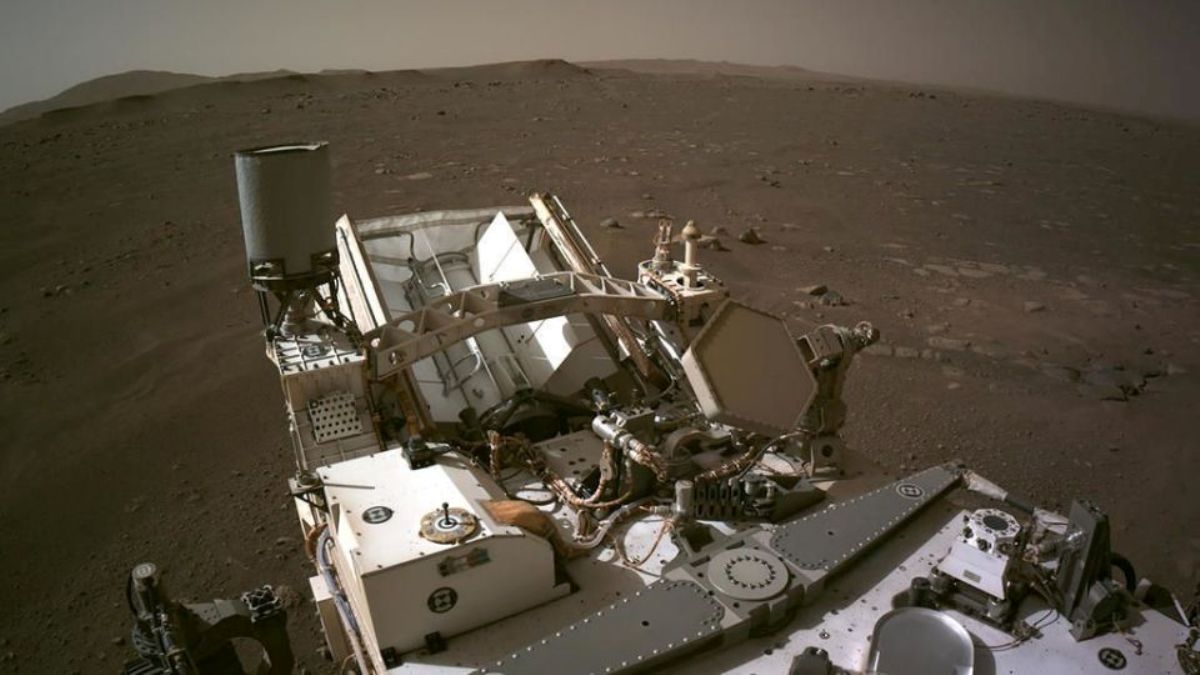In a first, NASA’s Perseverance Mars rover has converted some of the Red Planet’s thin, carbon dioxide-rich atmosphere into oxygen, the US space agency has said.
The task was accomplished by a toaster-size, six-wheeled robot aboard Perseverance called the Mars Oxygen In-Situ Resource Utilisation Experiment (MOXIE) on April 20.
Advertisement
The technology could pave the way for isolating and storing oxygen on Mars, which is 96 per cent carbon dioxide, to help power rockets that could lift astronauts off the planet’s surface. Such devices also might one day provide breathable air for astronauts themselves.
In this first operation, MOXIE produced about 5 grams of oxygen, equivalent to about 10 minutes worth of breathable oxygen for an astronaut. MOXIE is designed to generate up to 10 grams of oxygen per hour.
“This is a critical first step at converting carbon dioxide to oxygen on Mars. MOXIE has more work to do, but the results from this technology demonstration are full of promise as we move toward our goal of one day seeing humans on Mars,” said Jim Reuter, Associate Administrator for NASA’s Space Technology Mission Directorate (STMD).
MOXIE works by separating oxygen atoms from carbon dioxide molecules, which are made up of one carbon atom and two oxygen atoms. A waste product, carbon monoxide, is emitted into the Martian atmosphere.
The conversion process requires high levels of heat to reach a temperature of approximately 1,470 degrees Fahrenheit (800 Celsius). To accommodate this, the MOXIE unit is made with heat-tolerant materials — 3D-printed nickel alloy parts, which heat and cool the gases flowing through it, and a lightweight aerogel that helps hold in the heat. Thin gold coating on the outside of MOXIE reflects infrared heat, keeping it from radiating outward and potentially damaging other parts of Perseverance.
“Oxygen isn’t just the stuff we breathe. Rocket propellant depends on oxygen, and future explorers will depend on producing propellant on Mars to make the trip home,” Reuters said.
MOXIE is expected to extract oxygen at least nine more times over the course of a Martian year (nearly two years on Earth).
These oxygen-production runs will come in three phases. The first phase will check out and characterise the instrument’s function, while the second phase will run the instrument in varying atmospheric conditions, such as different times of day and seasons. In the third phase, “we’ll push the envelope” – trying new operating modes, or introducing “new wrinkles, such as a run where we compare operations at three or more different temperatures,” said MOXIE’s principal investigator, Michael Hecht of the Massachusetts Institute of Technology’s Haystack Observatory.
The Mars 2020 Perseverance mission is part of NASA’s Moon to Mars exploration approach, which includes Artemis missions to the Moon that will help prepare for human exploration of the Red Planet.









